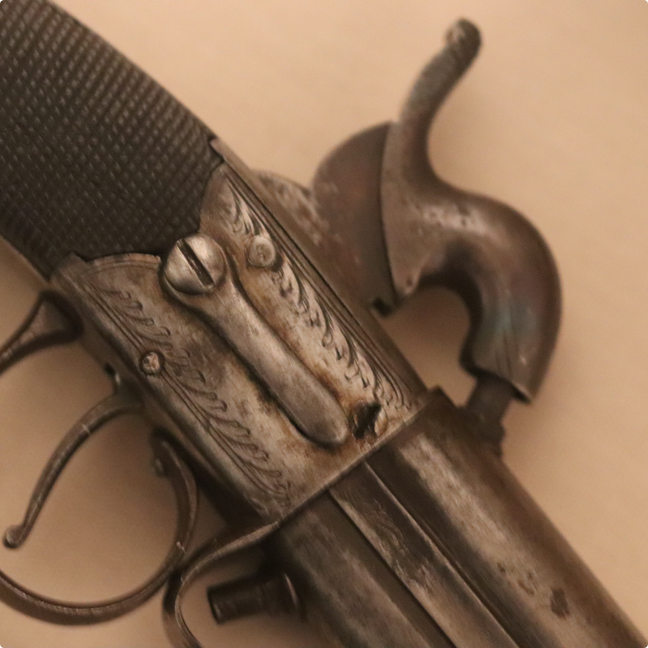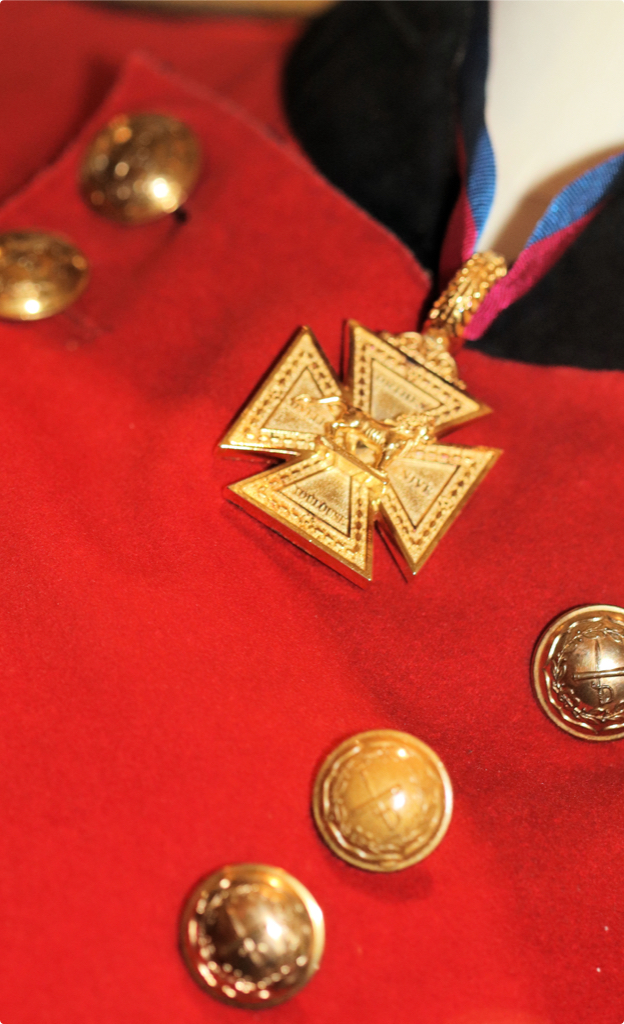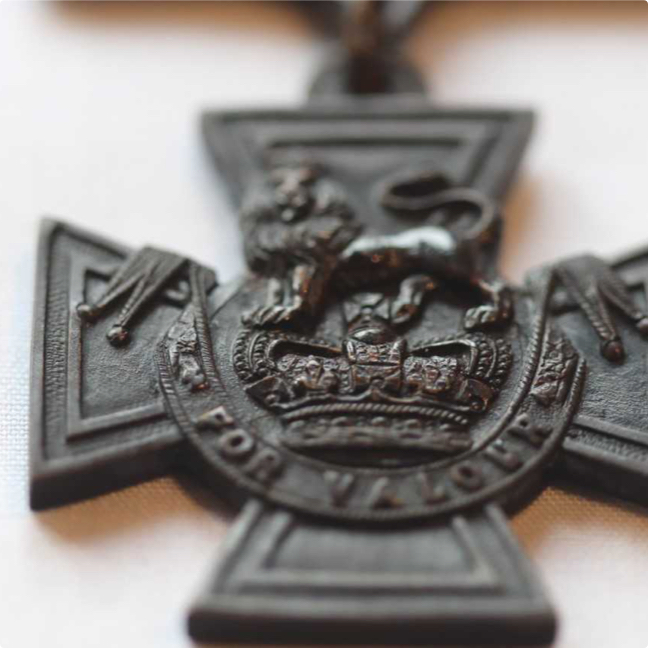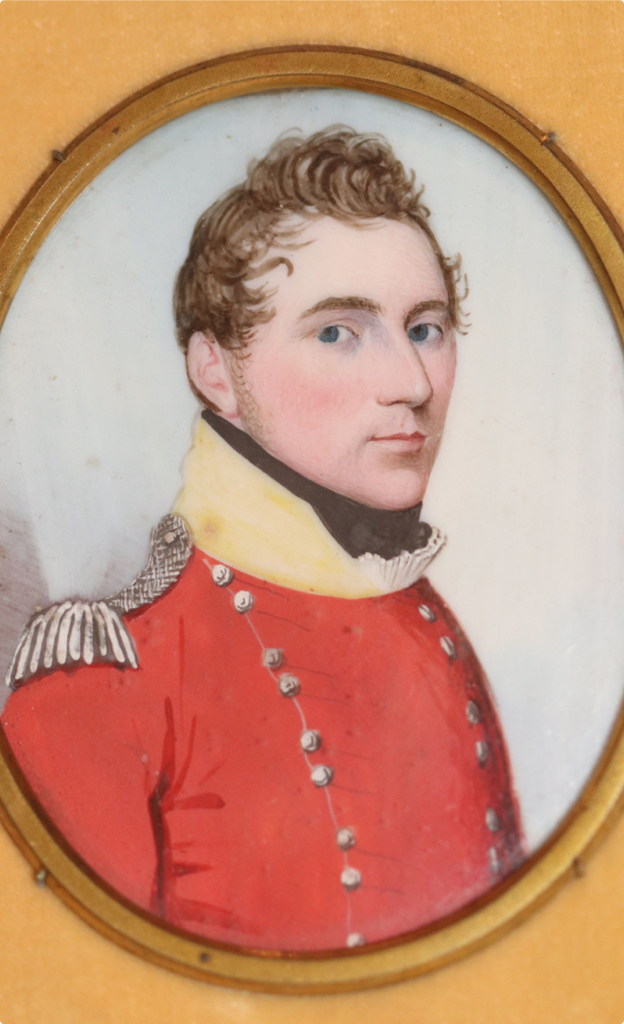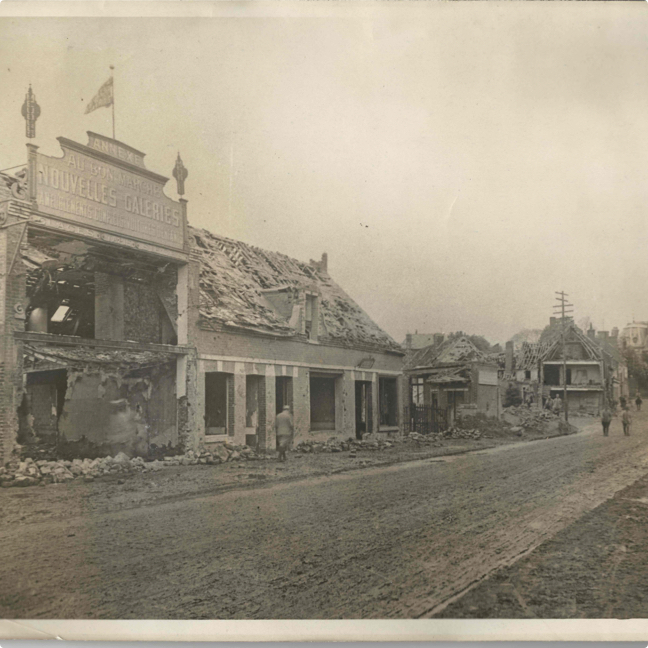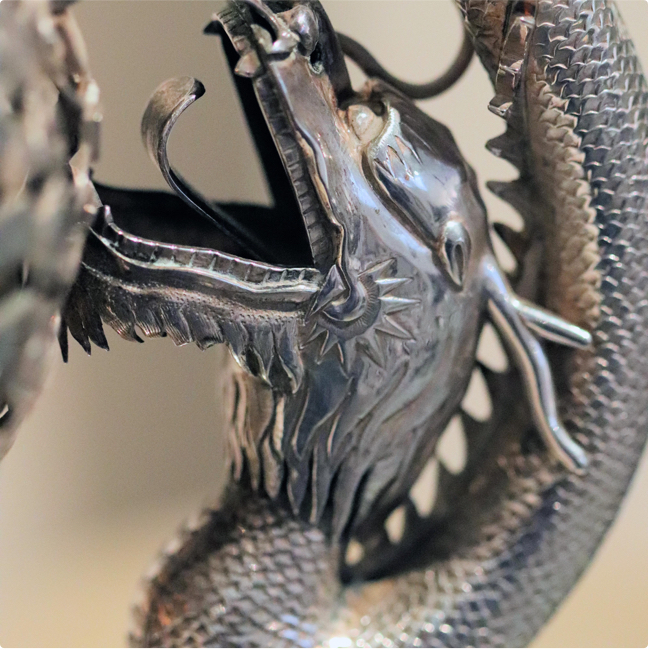Paintings
Many of the paintings included in the collection were originally owned by the Regiment and some were displayed in the Officers’ Mess, often commissioned and gifted by its members.
The collection is characterised by portraits of notable members of the regiment which includes an oral painting of Fusilier Francis Jefferson VC who was awarded the Victoria Cross at Monte Cassino in Italy for single-handedly destroying a German tank. It also comprises of battle scenes such as the famous Gallipoli landings in 1915, for which the Lancashire Fusiliers won ‘Six VCs Before Breakfast’. The Collison-Morley collection consisting of 85 watercolours was painted in the early 1900s when Collison-Morley was serving with the Regiment (1901-8). This includes scenes from Crete, Gibraltar, Malta and India whilst serving with the 1st Battalion, The Lancashire Fusiliers. The most recent additions to the collection are a series of watercolours depicting scenes over the last 50 years, including Fusiliers in Belfast, training in the Falklands and on operations in Afghanistan.

